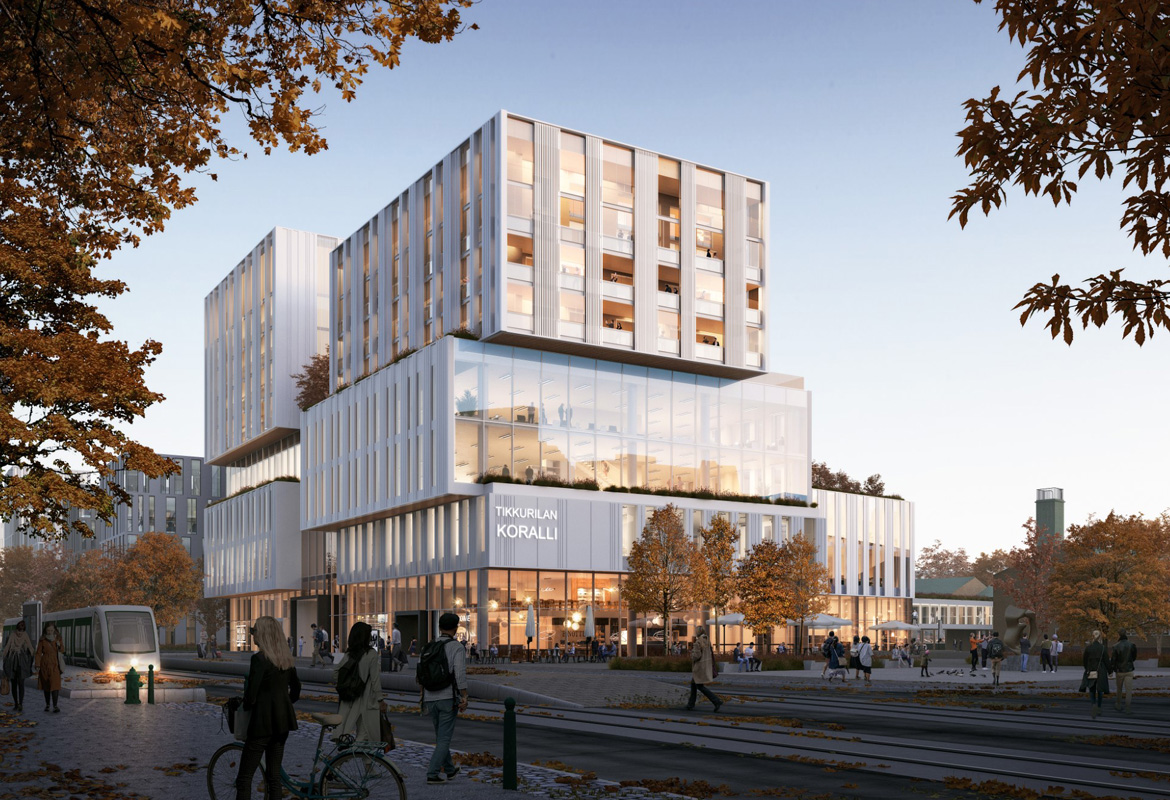


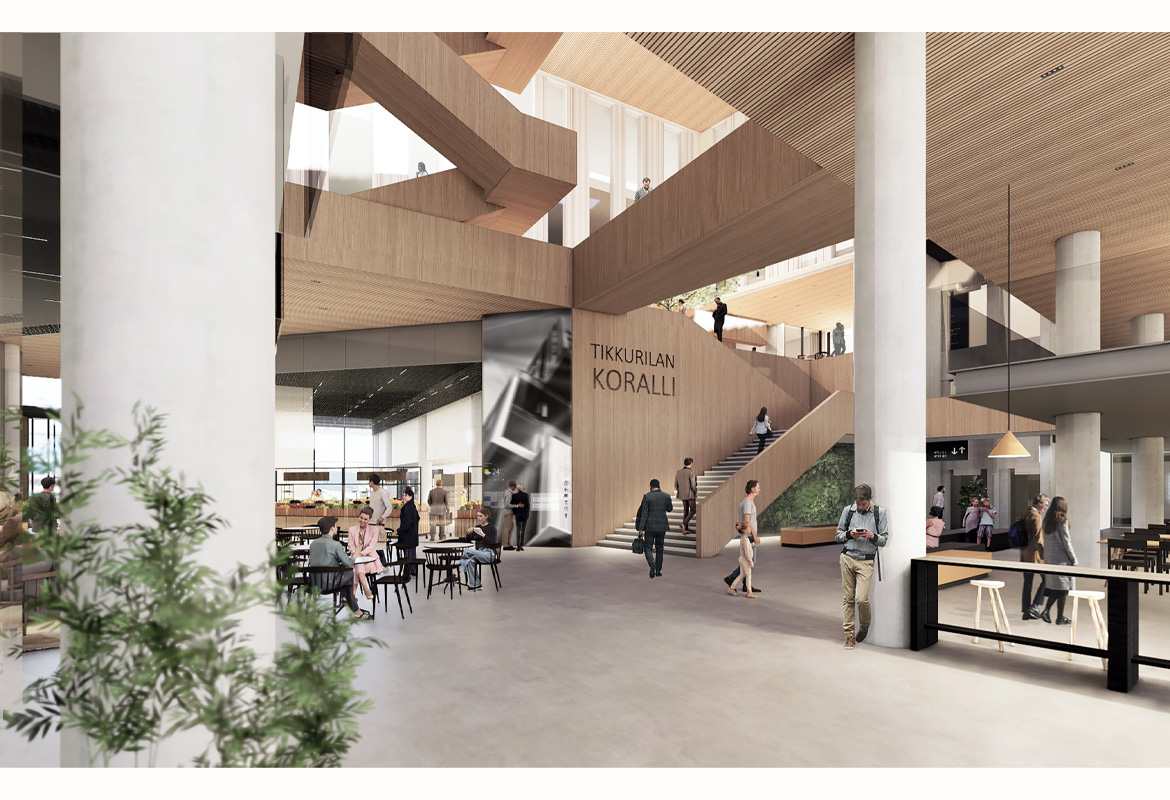



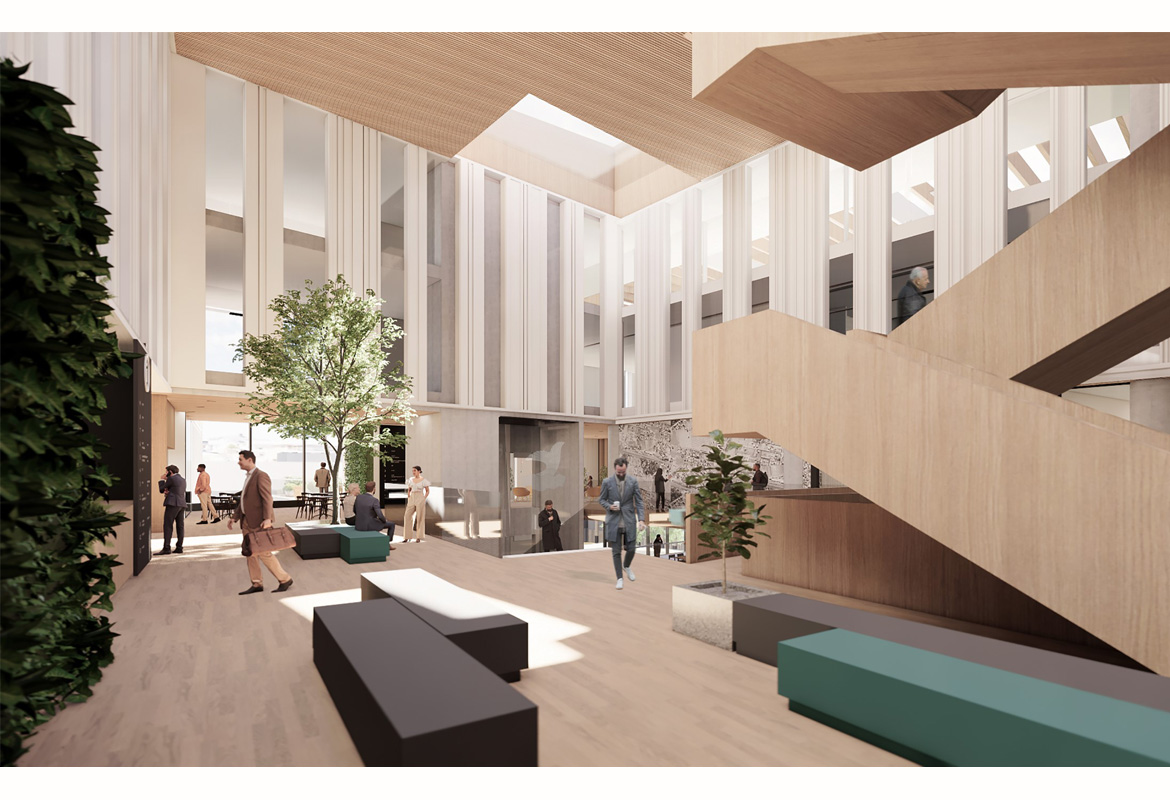
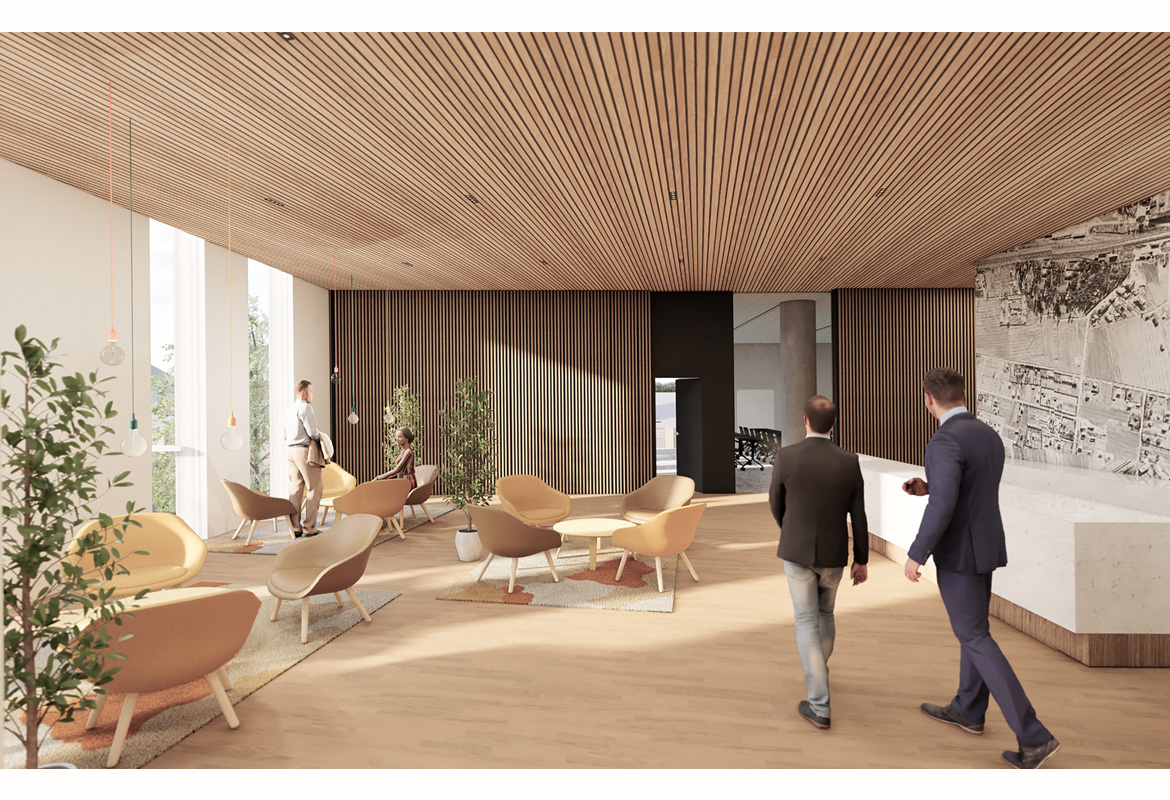

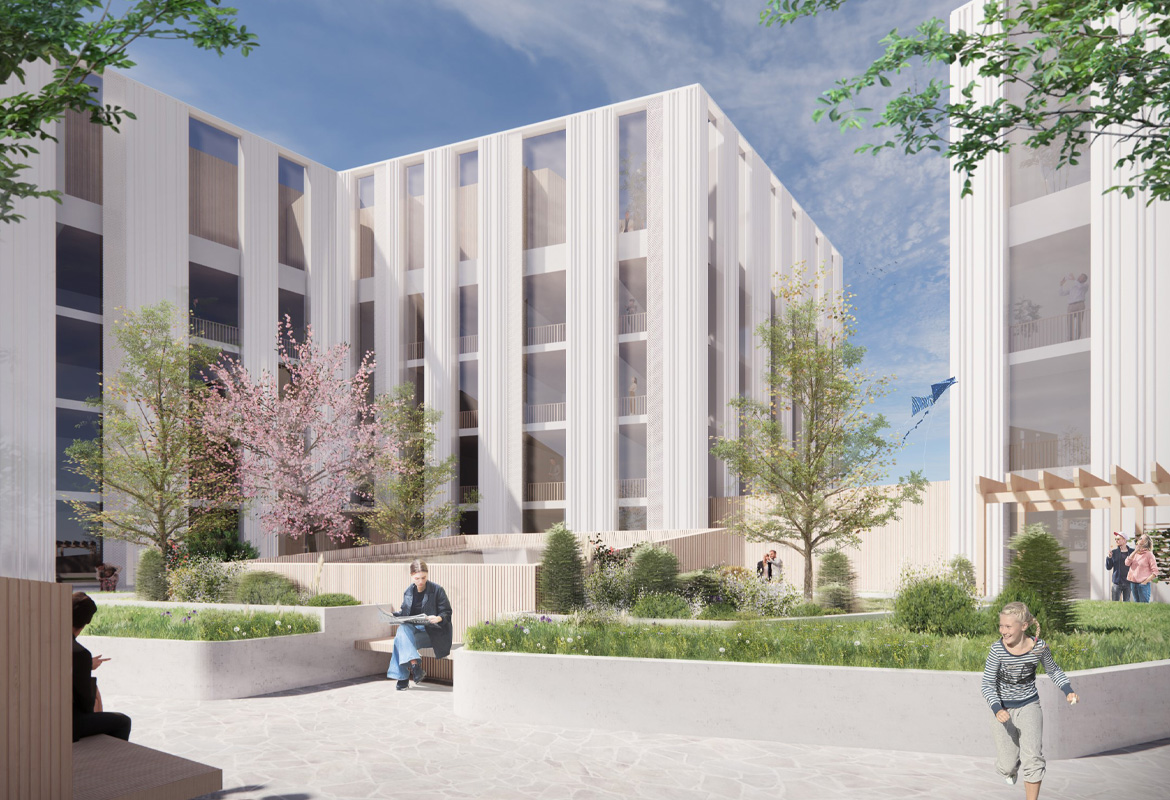

Kielotie 13 mixed-use building “Koralli”
Location: Vantaa, Finland
Size: 23,000 m2 (of which 6,000 m² residential)
Functions: Offices, Public services, Commercial services, Housing
Scope: Architecture, Interior, Workplace design
Status: Winner, public procurement negotiated procedure, 2021
Client: City of Vantaa
The unique hybrid building at Kielotie 13 in Tikkurila was designed to form a vibrant new heart for the city of Vantaa, part of the Helsinki metropolitan area. Built on the principles of openness and inclusion, the building blends public functions with commercial services and living to create an urban, communal centre that encourages encounters between people in shared, multifunctional spaces.
The name for the design, “Koralli” (coral) refers to the varied and flexible forms and functions of the building. Like a coral reef, the building forms an ecosystem of its own, supporting a rich variety of users and uses throughout the day.
The complex contains a mixed-use office building with restaurants and retail premises on the ground floor and three floors of offices for the City’s use, topped by three four-storey residential components. Parking is arranged underground.
The large building mass is broken down into smaller blocks stacked on top of each other like a partly open chest of drawers, forming green terraces and natural shading overhangs. The different functions are located in distinctive blocks, unified by the facade design. The vertical lines of the façade create the feel of a classic administrative building in a visual nod to the adjacent City Hall, dating from 1958, while the varying width of the ceramic panels gives the building a dynamic, contemporary appearance.
The building steps down towards the City Hall, creating a green, human-scale urban square. The central pedestrian zone continues along indoor streets into the building, passing shops and restaurants to converge on the central atrium, or “market square”. The skylit atrium spans the full height of the building and is dominated by a wood-clad staircase that rises like a tree to the office floors.
The City offices are clustered around the atrium with access to green rooftop terraces and balconies. Citizens’ services and other semi-public areas, such as meeting rooms, are located around the second-floor lobby, with a direct connection to the adjacent City Hall via a glazed bridge.
City employees were engaged in designing the activity-based work environment using participatory service design methods, taking into account the changing nature of workplaces and the need to accommodate future hybrid forms of working.
The design allows for easy modification and reuse of the building over its lifespan. The carbon footprint of the complex is planned to be up to 55% lower than in an average new build, aiming at LEED Platinum Certification. This will be achieved through careful choice of materials and high energy efficiency, with a CHC heat pump system and roof panels supplying solar power.
| BACK |
